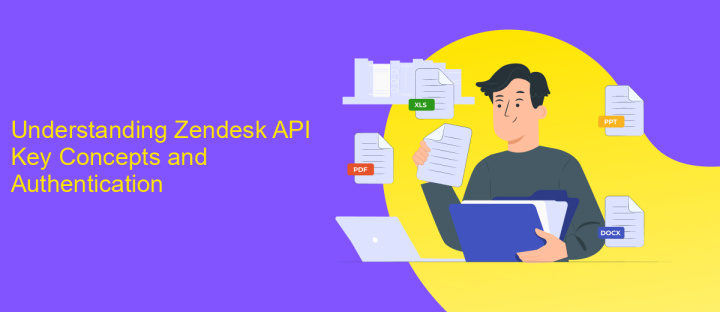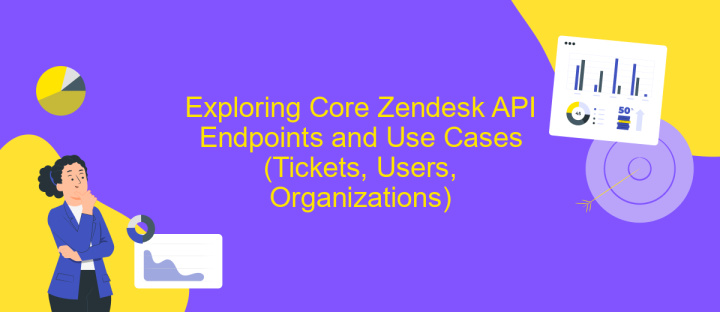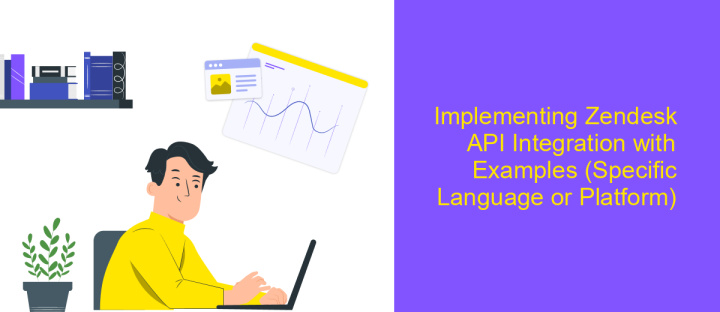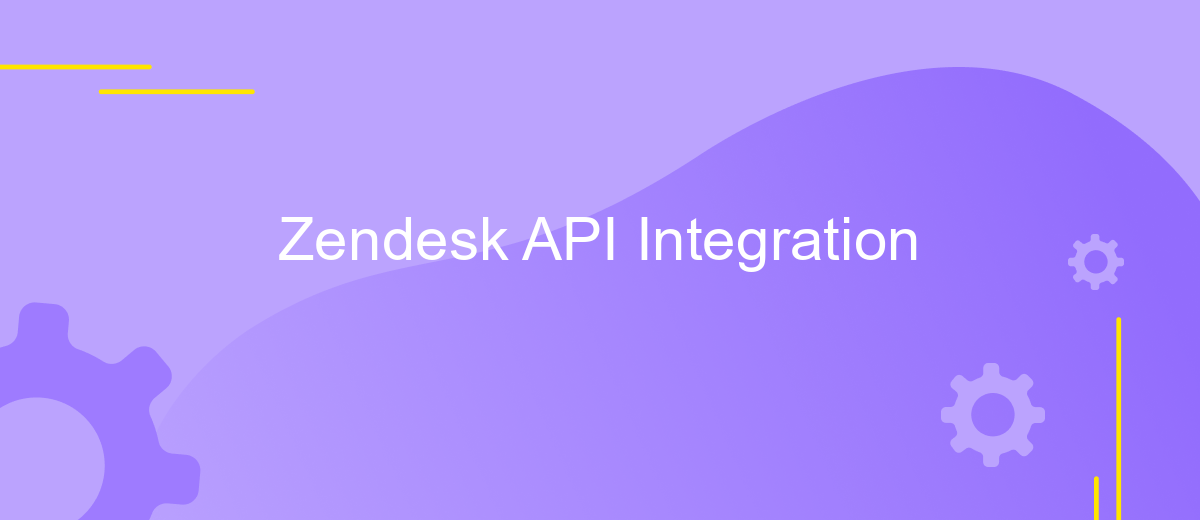Zendesk API Integration
In today's fast-paced digital landscape, seamless customer support is crucial for maintaining a competitive edge. Zendesk API integration empowers businesses to enhance their customer service capabilities by connecting various applications and automating workflows. By leveraging the robust features of Zendesk's API, organizations can streamline operations, improve response times, and deliver personalized experiences, ultimately driving customer satisfaction and loyalty to new heights.
Introduction to Zendesk API and its Benefits
The Zendesk API is a powerful tool that allows businesses to seamlessly integrate their existing systems with Zendesk's customer service platform. By leveraging this API, companies can enhance their customer support capabilities, streamline workflows, and improve overall efficiency. The API provides access to a wide range of functionalities, including ticket management, user data retrieval, and reporting, making it an essential component for businesses aiming to deliver superior customer experiences.
- Automate repetitive tasks to save time and reduce human error.
- Customize and extend Zendesk functionalities to meet specific business needs.
- Integrate with third-party applications to create a unified support ecosystem.
- Access real-time data for better decision-making and reporting.
Utilizing the Zendesk API not only empowers businesses to tailor their support operations but also provides the flexibility to adapt to changing customer demands. With its robust set of features and ease of integration, the API is an invaluable asset for companies looking to elevate their customer service strategy. By connecting various tools and services, businesses can create a more cohesive and efficient support environment, ultimately leading to increased customer satisfaction and loyalty.
Understanding Zendesk API Key Concepts and Authentication

Understanding Zendesk API involves grasping key concepts and authentication methods essential for seamless integration. The Zendesk API allows developers to access and manipulate various features of the Zendesk platform, such as tickets, users, and organizations. Key concepts include endpoints, which are specific paths that correspond to different functionalities, and HTTP methods like GET, POST, PUT, and DELETE that define the actions you can perform. Additionally, rate limits are crucial to consider as they define the number of API requests you can make within a certain time frame, ensuring the stability and performance of the Zendesk service.
Authentication is a critical component when integrating with the Zendesk API, as it ensures secure access to your data. Zendesk supports several authentication methods, including Basic Authentication, OAuth, and API tokens. Each method has its own use cases and security implications. For those seeking to simplify the integration process, tools like ApiX-Drive can be invaluable. ApiX-Drive offers a user-friendly interface to connect Zendesk with various applications, streamlining data transfer and automation without extensive coding knowledge. This can significantly reduce the complexity and time required to set up and maintain integrations.
Exploring Core Zendesk API Endpoints and Use Cases (Tickets, Users, Organizations)

The Zendesk API is a powerful tool that allows developers to integrate and automate various functionalities of the Zendesk platform. By exploring its core endpoints, businesses can enhance their customer service operations efficiently. The primary endpoints include Tickets, Users, and Organizations, each serving distinct purposes and offering unique use cases.
- Tickets: This endpoint allows for the creation, updating, and management of customer support tickets. Use cases include automating ticket assignments, updating ticket statuses, and retrieving ticket histories for analysis.
- Users: This endpoint manages user profiles, facilitating operations such as creating new users, updating user information, and managing user roles. It's essential for personalizing customer interactions and maintaining accurate user data.
- Organizations: This endpoint focuses on managing organizational data, enabling the grouping of users and tickets under specific organizations. It supports use cases like retrieving organization-specific ticket histories and managing organizational memberships.
By leveraging these core Zendesk API endpoints, businesses can streamline their customer support processes, improve data management, and provide more personalized service experiences. Integrating these functionalities into existing systems can lead to increased efficiency and customer satisfaction.
Implementing Zendesk API Integration with Examples (Specific Language or Platform)

Integrating Zendesk API into your application can significantly enhance customer support capabilities. The API provides a robust platform for accessing and managing Zendesk features programmatically. To begin, ensure you have a Zendesk account and API token ready for authentication purposes.
For example, when using Python, you can utilize the 'requests' library to interact with the API. Start by installing the necessary packages and setting up your environment. Once configured, you can proceed with making API calls to fetch or update data.
- Install the 'requests' library:
pip install requests - Set up authentication headers using your API token
- Make a GET request to retrieve tickets:
requests.get('https://yoursubdomain.zendesk.com/api/v2/tickets.json', headers=headers) - Parse the JSON response to handle the data
By following these steps, you can seamlessly integrate Zendesk into your system, providing a more efficient way to manage customer interactions. Customize the integration further by exploring additional API endpoints and functionalities that suit your specific needs.


Best Practices and Troubleshooting for Zendesk API Integration
When integrating Zendesk API, it's crucial to follow best practices to ensure a smooth and efficient process. Start by thoroughly understanding the API documentation provided by Zendesk, which offers detailed insights into endpoints, authentication, and rate limits. Implement robust error handling in your integration to gracefully manage issues such as rate limit exceedance or network failures. Additionally, consider using a service like ApiX-Drive to simplify the integration process. ApiX-Drive offers tools that can automate and streamline API connections, reducing the need for manual coding and minimizing potential errors.
Troubleshooting Zendesk API integration often involves checking for common issues such as incorrect authentication tokens or misconfigured endpoints. Ensure your API requests are correctly formatted and test them using tools like Postman to identify any discrepancies. Logging is another essential practice; maintain detailed logs of your API requests and responses to quickly pinpoint any anomalies. If you encounter persistent issues, consult the Zendesk developer community or support forums for guidance. By adhering to these best practices and utilizing available tools, you can effectively manage and troubleshoot your Zendesk API integration.
FAQ
How do I authenticate with the Zendesk API?
Can I integrate Zendesk with other applications without coding?
What are the rate limits for the Zendesk API?
How can I automate ticket creation in Zendesk using the API?
Is it possible to retrieve historical data from Zendesk using the API?
Do you want to achieve your goals in business, career and life faster and better? Do it with ApiX-Drive – a tool that will remove a significant part of the routine from workflows and free up additional time to achieve your goals. Test the capabilities of Apix-Drive for free – see for yourself the effectiveness of the tool.

